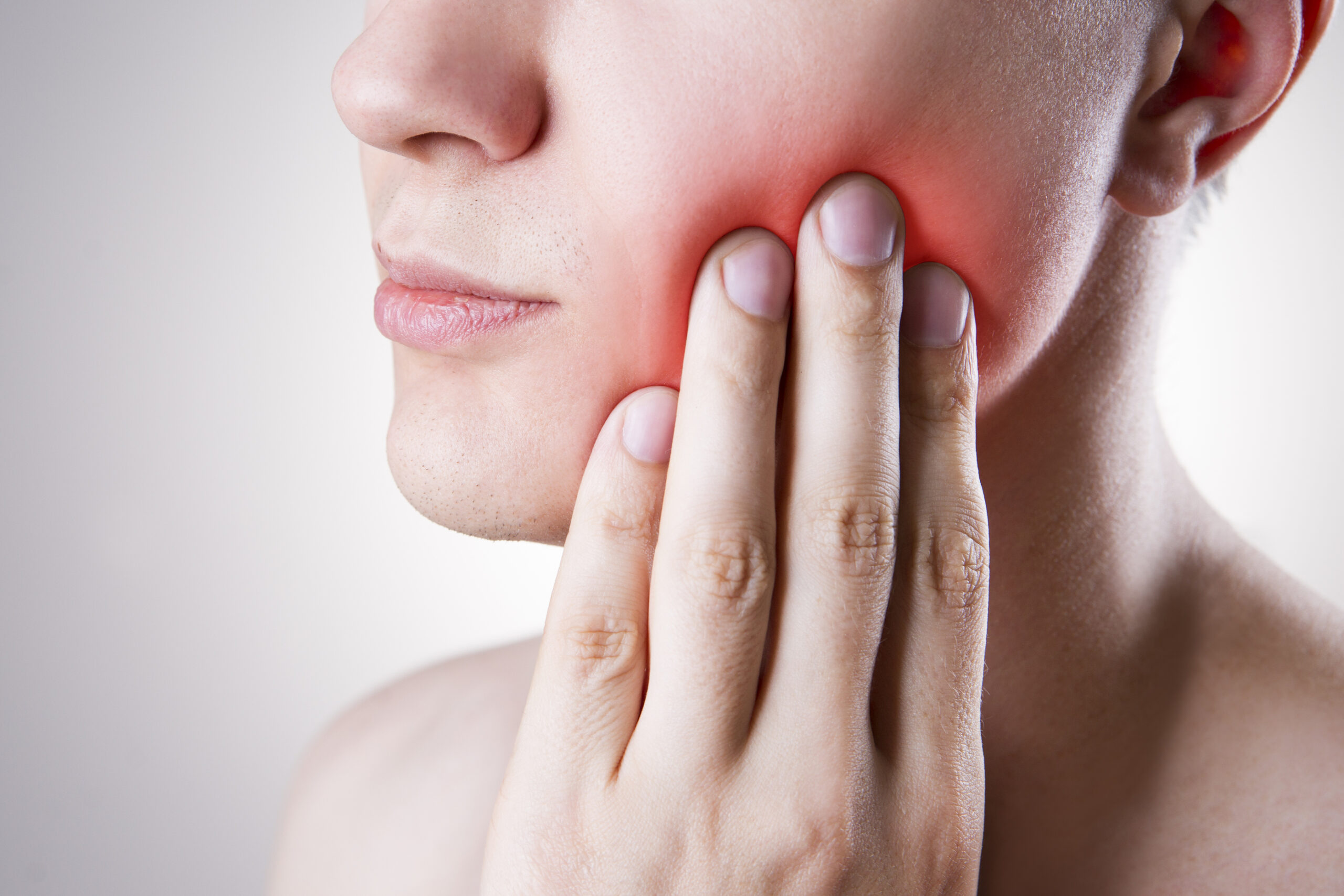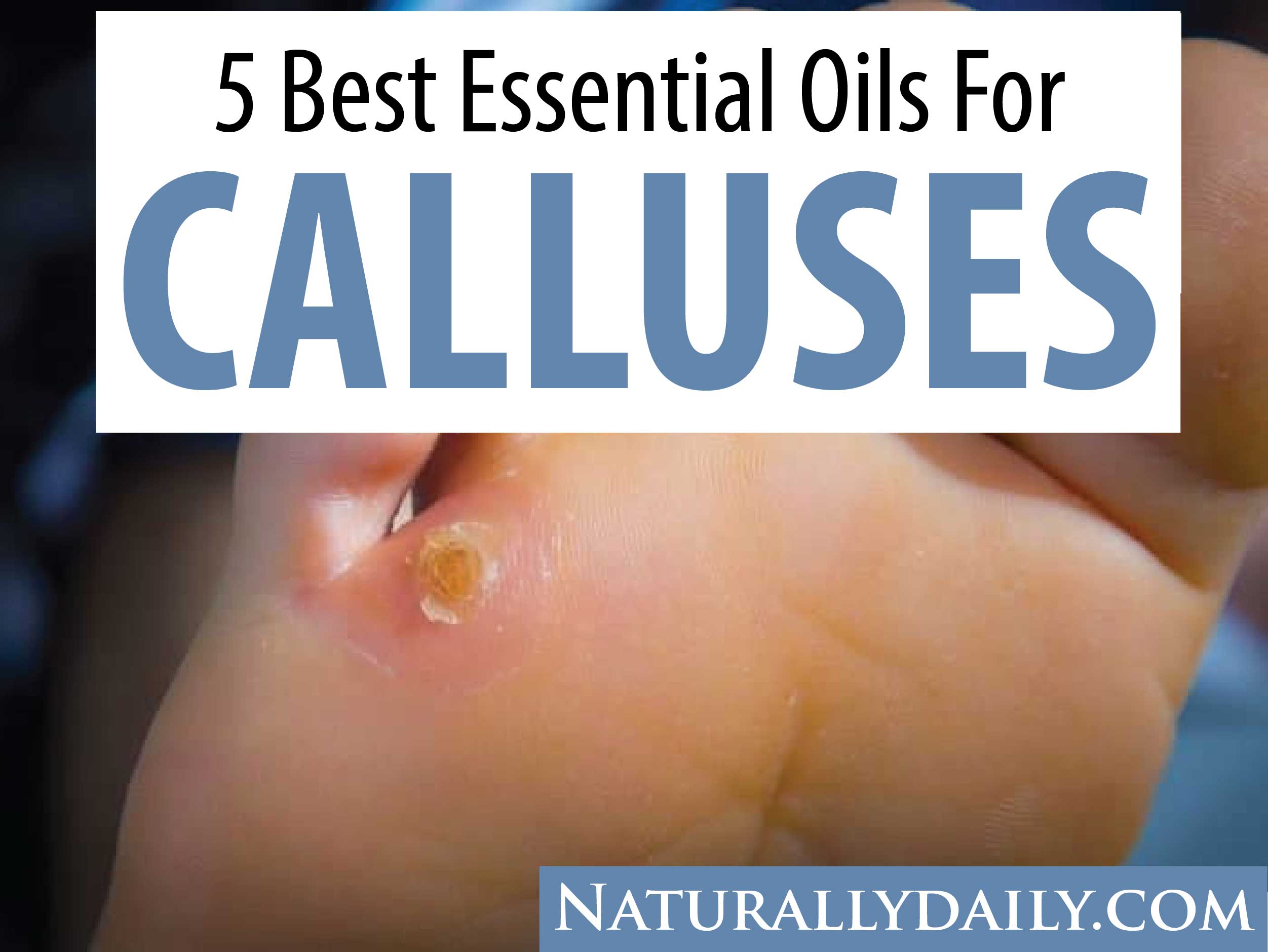Fibrocystic breast is a common disease in women. It is a benign (noncancerous) condition when the breasts feel lumpy.
This condition has many different names such as Mammary dysplasia, diffuse cystic mastopathy, benign breast disease, glandular breast changes, etc. [1]
It happens because of the presence of many small cysts or masses.
Fibrocystic breast is not breast cancer. Some essential oils for fibrocystic breast may reduce the symptoms of the condition.
Almost 60% of women suffer from this condition.
Fibrocystic breast is most common in women who are between the ages of 30 and 50. [2]
However, any woman can develop it at any point in time. Fibrocystic breast is often observed before periods.
The exact causes of fibrocystic breasts are unknown. But it might be a result of hormonal imbalance. [3]
Hence, it needs proper diagnosis.
This article looks into some essential oils for fibrocystic breast and their efficacy in treating the condition.
Essential Oils for Fibrocystic Breasts Disease
Essential oils have been beneficial to many patients suffering from fibrocystic breasts.
Certain essential oils contain limonene in large amounts. This compound helps stop regress abnormal cell growth. [14]
Frankincense and Sandalwood essential oils have anti-tumor properties.
Many people use a combination of Frankincense, Sandalwood, Lavender, Green Myrtle, and a touch of Grapefruit oil in a base of Jojoba oil to treat fibrocystic breasts.
Here are some essential oils that may be effective in treating fibrocystic breasts.
1. Lavender Oil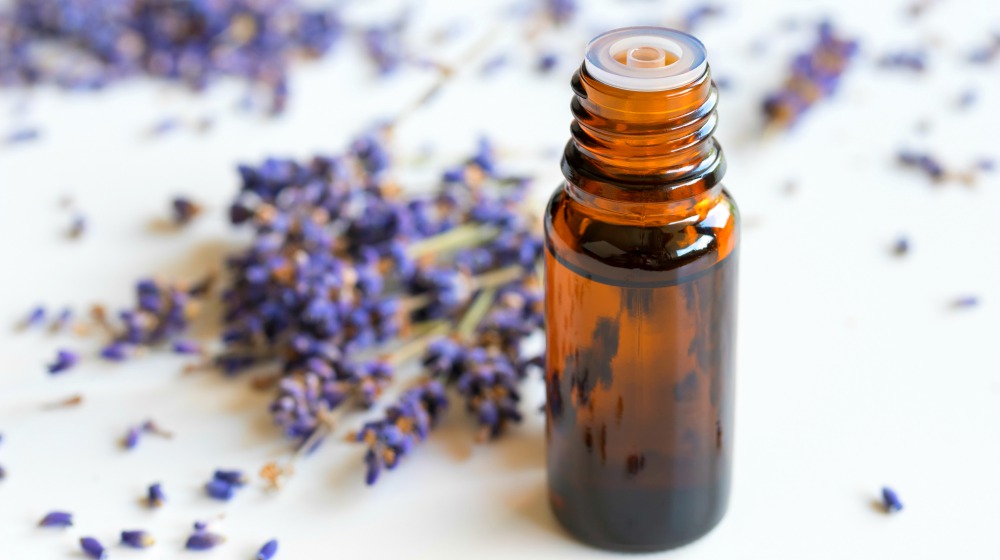
Lavender oil contains many beneficial properties. It is gentle enough to be applied to the skin.[15]
Science has started to test the range of health benefits of lavender essential oil. But, there is already a lot of evidence that proves the amazing capabilities of this oil. [16]
The analgesic and calming properties of the oil may relieve the symptoms of fibrocystic breasts.
How to use lavender essential oil for breast cyst:
Massaging this oil into the back of the neck, chest, and temples can have relaxing and calming effects. When you are having pain in the breasts, apply a few drops of lavender to the affected area. [17]
You may diffuse lavender essential oil for relieving stress, and anxiety, and improving sleep. You can also inhale it directly from the bottle.
Read More: How to Get Rid of a Chalazion: 8 Easy Home Remedies to Comfort Your Eyes!
2. Sandalwood Oil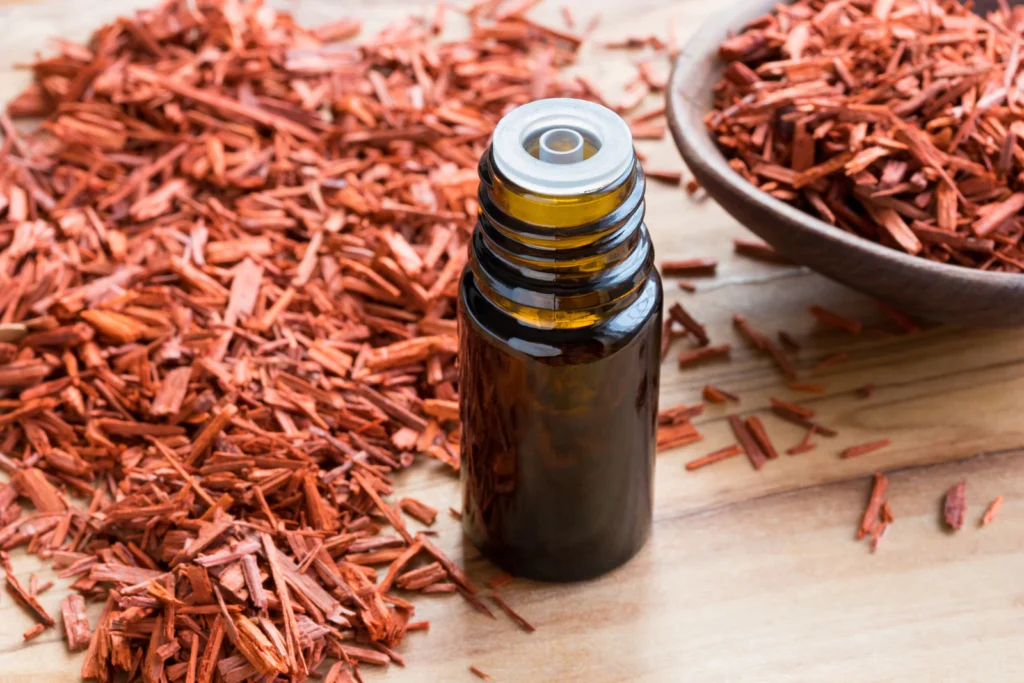
Sandalwood essential oil can help people achieve more clarity and calmness.
This essential oil has a fantastic scent. It may also affect well-being and mental health. [18]
Sandalwood oil is an excellent anti-viral agent. It is beneficial to prevent the replication of common viruses like herpes simplex.
You can apply this oil to the skin to reduce inflammation from wounds, pimples, warts, and boils.
This oil can also treat sore throat, and urinary and chest infections.
Sandalwood oil also is an anti-inflammatory agent. It may provide relief from mild inflammation like insect bites, or contact irritations.
Sandalwood has an active ingredient called santol. It helps decrease inflammation markers in the body named cytokines.
Santalol may act in a similar manner to NSAID medications. But without any potential adverse side effects.
Here is a simple method of using sandalwood essential oil for breast lumps:
Make sure to always test sandalwood oil over a small area before applying it to the skin.
Mix 2-3 drops of sandalwood oil with some base oils. Massage the oil solution topically on the breasts.
Read More: 11 Natural Ways to Cure Muscle Spasms in Stomach & Reasons
3. Lemon Oil
Citrus plants are the primary source of many essential oils. Lemon oil is a potent citrus oil. People have been using Lemon oil to treat many health conditions.
It contains potent antioxidant properties.
Lemon oil has the ability to cleanse toxins from the body. It is widely used to purify skin and fight bacteria or fungi strains.
You may use lemon oil as a natural teeth whitener, household cleaner, and laundry freshener. It’s a great mood booster and nausea reliever.
Limonene is a significant component of lemon essential oil. It has anti-tumor and chemotherapeutic effects. This is very beneficial to patients with fibrocystic breasts.
How to use lemon oil for fibrocystic breasts disease natural treatment:
Consuming lemon oil results in significant regression of mammary carcinoma or breast cancer. And it doesn’t have any significant systemic toxicity.
The topical application of oils that contain limonene may also prevent breast cancer risk.
Consult an expert to learn the appropriate dosage and procedure of ingesting lemon oil.
4. Frankincense Essential Oil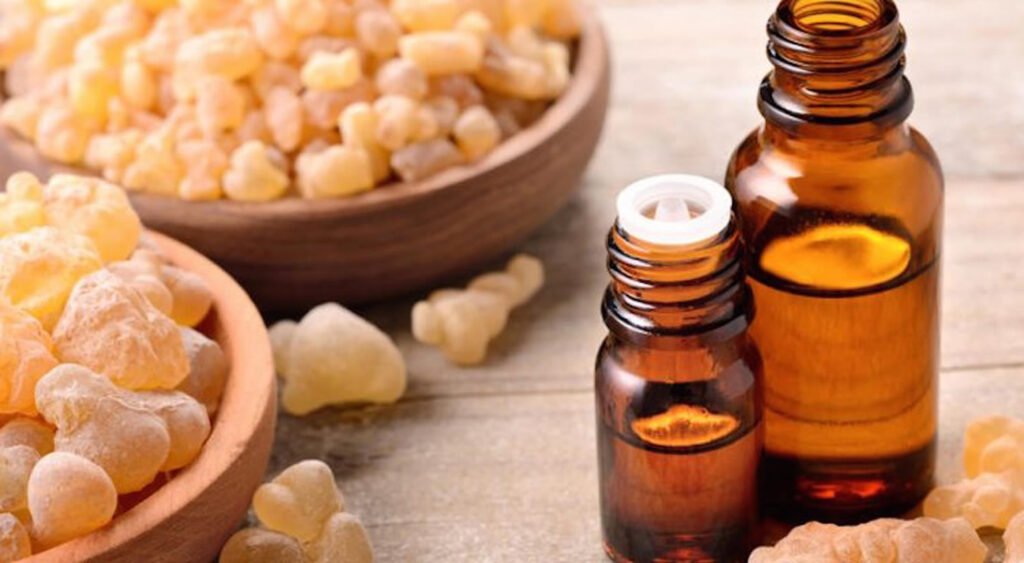
Frankincense Essential Oil is popular for its medicinal properties. This oil has antiseptic, disinfectant, expectorant, cicatrizant, astringent, and carminative properties. It also has cytoplasmic, uterine, digestive, diuretic, sedative, tonic, and a vulnerary substance.
Frankincense oil may relieve fibrocystic breasts disorders.
The analgesic properties in frankincense oil may relieve pain and swelling.
It also has wound healing properties. This oil boosts the well-being of the immunity system. It helps the patient to feel more energized.
An easy way of using frankincense essential oil for breast cysts:
Apply a diluted solution of 2-3 drops of frankincense essential oil on the breasts. You can also use it by blending it with a skin cream.
Read More: 12 Health Benefits and Uses of Frankincense Oil to Know About
5. Rose Oil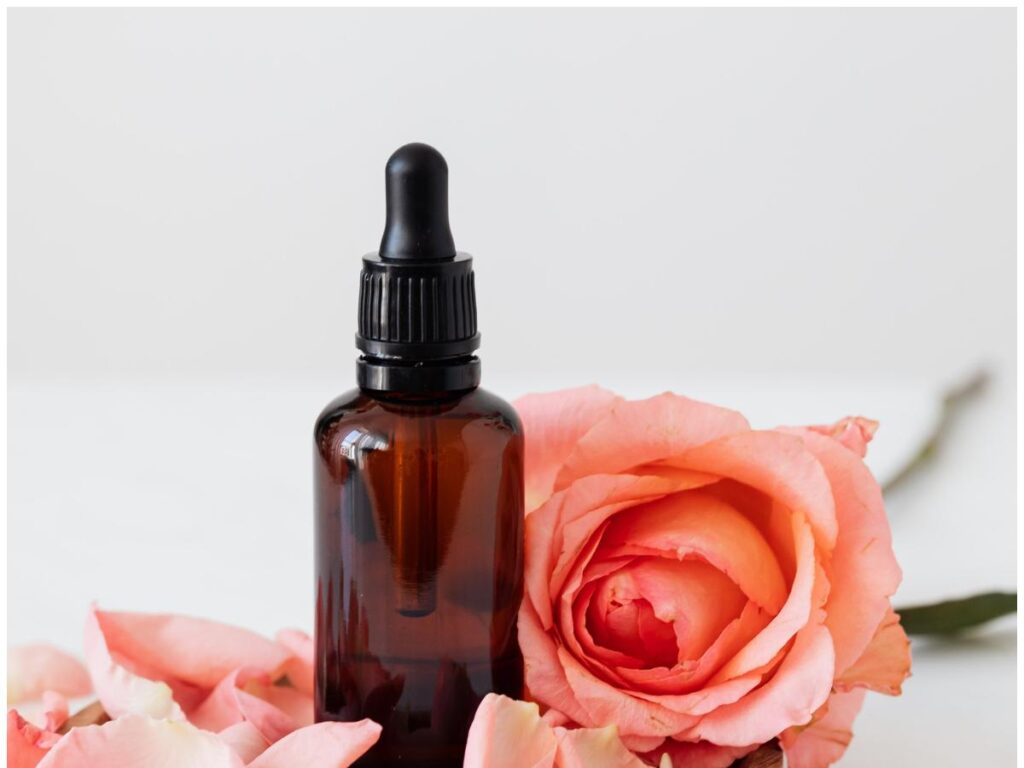
Rose essential oil can purify the blood. Because it helps in the removal and neutralization of toxins. [19]
The body is safe from skin diseases when the blood is clean and free of toxins.
Rose oil may clear harmful substances from the internal breast muscles. This way rose oil may prevent excessive toxicity in the body.
Moreover, rose essential oil may prevent severe health conditions like cancer and heart diseases.
A simple way of using rose essential oil for fibrocystic breasts is to diffuse some rose oil in your room and inhale.
6. Niaouli Oil
Niaouli oil has analgesic, anti-rheumatic, stimulant, antiseptic, bactericidal, balsamic, vermifuge, and vulnerary substances. This herbal oil is very effective in relieving breast pain. It can also soothe headaches, toothaches, migraines, earaches, muscle, and joint pain. [20]
Niaouli essential oil has pain-relieving properties. The essential oil may relieve the pain and swelling of fibrocystic breasts. Niaouli oil eliminates pain by inducing numbness in the nerves. It also desensitizes the affected area.
An easy method of using niaouli oil for fibrocystic breasts is to massage the affected area with a few drops of the oil every night.
7. Grapefruit Oil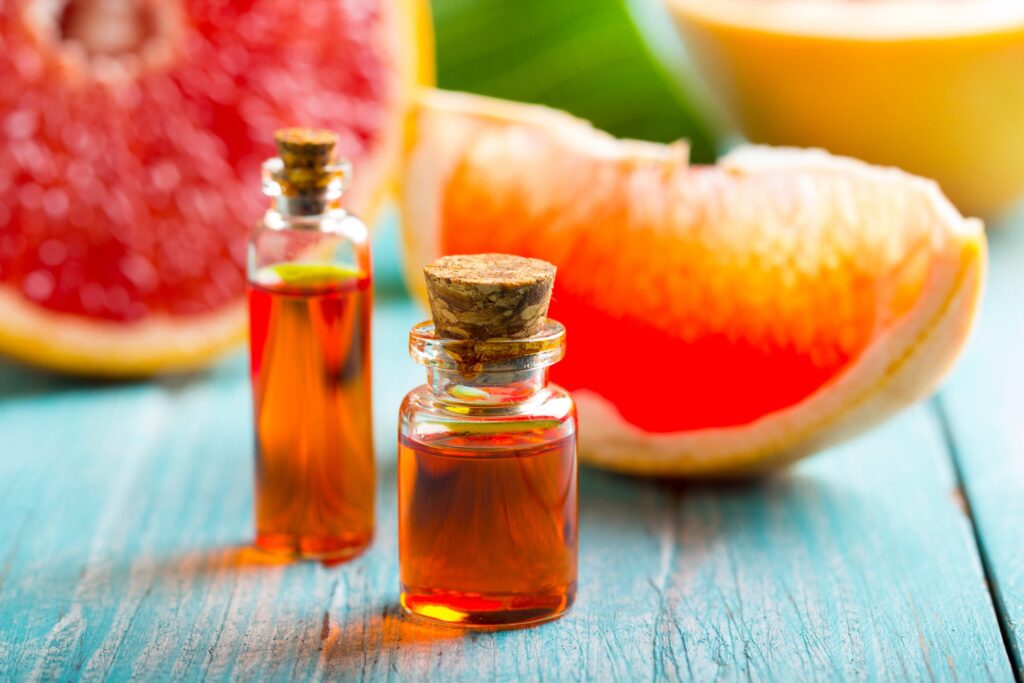
Grapefruit essential oil is rich in antioxidants and phytochemicals. The properties of this oil reduce oxidative stress and disease-causing inflammation.
Some health benefits of grapefruit essential oil are due to limonene. It’s one of its primary constituents that makes up about 88-95 percent of grapefruit oil.
Limonene is famous for its tumor-fighting, cancer-preventative phytochemical effects. It protects the DNA and cells from damage.
Grapefruit essential oil also contains vitamin C, myrcene, terpinene, pinene, Citronellol, etc.
All these beneficial substances make grapefruit oil a powerful remedy for fibrocystic breasts.
Apply and massage 2-3 drops of grapefruit seed oil on your fibrocystic breasts. Use this remedy daily.
Read More: 16 Amazing Home Remedies for Chickenpox Scars
Herbs for Fibrocystic Breasts
Some herbs may work as home remedies for fibrocystic breasts. Each of these herbs may relieve some specific symptoms of fibrocystic or lumpy breasts.
- Black cohosh (to relieve aching pains)
- Wild Iris (to reduce lymphatic swellings)
- Goldenseal
- Poke root (for hard and lumpy swellings)
- Bryony (to treat the inflammatory pain of the breasts)
- Wild indigo (to treat inflamed tissues)
- Belladonna (to relieve throbbing breasts pain)
WARNING: Most of these plants and herbs contain toxic compounds. You need medical supervision before using these herbs for fibrocystic breasts. Only a small dosage in homeopathic dilutions may be recommended to you.
Causes of Fibrocystic Breasts
The breast tissues may change in response to the hormones made by the ovaries. A patient with fibrocystic breasts will have more changes due to these hormones. [7]
The lumps in the breasts result from:
- Cysts, and
- Swelling of the breast lobules, the milk-producing glands
A patient may also feel a lumpy thickening in the breast, caused by:
- Excess growth of fibrous tissue. [9]
- Women who have a history of constipation are several times more likely to get cysts. The ones who have at least one bowel movement every day are less likely to get cysts.
- Those who regularly consume a plant-based diet excrete twice as much detoxified estrogens as those who eat meat. [10]
- Meat eaters (Carnivores) tend to reabsorb the excess estrogen through their intestinal wall.
- People who have cysts and fibroadenoma in their breasts generally have cysts and nodules in other parts of their anatomy as well.
- It appears in the same areas that are hormonally affected along the endocrine tree. This includes the thyroid, ovaries, and uterus. [11]
Symptoms of Fibrocystic Breasts
FBD symptoms can range from mildly annoying in some women, to severely painful in others. And the severity of these symptoms may vary from month to month in the same patient. [12]
Fibrocystic breast disease itself is not that dangerous. But, it does complicate breast self-examination.
It makes it difficult to identify a new lump amongst existing ones. So, many women have to go through probing, squishing, X-raying, and routine biopsies.
This may, in fact, result in more trauma and also increase the risk of developing a malignancy. [13]
A patient with fibrocystic breasts may experience the following symptoms:
- lumps in one or both breasts
- pain
- swelling
- tenderness
- thickening of tissue
Read More: 12+ Essential Oils for Anxiety that Work (with How to Use Them)
When to See a Doctor
Fibrocystic breasts are normal in most cases. But, you need to consult a doctor if you see the following symptoms:
- You discover a new breast lump.
- You have continuous severe breast pain.
- The pain continues even after your period.
EndNote
Essential oils can relieve the pain, lumps, and swelling of breast cysts to a great extent. Using essential oils for fibrocystic breasts doesn’t have any side effects.
But if you’re pregnant or breastfeeding, consult a doctor before using the oils.
A change in lifestyle and food habits can help relieve fibrocystic breast pain as well.
A diet rich in fatty acids, magnesium, vitamin E, etc. can work wonders for fibrocystic breasts. Regular exercise is also necessary.
Read Next: 15 Easy Ways to Get Rid of Phlegm



